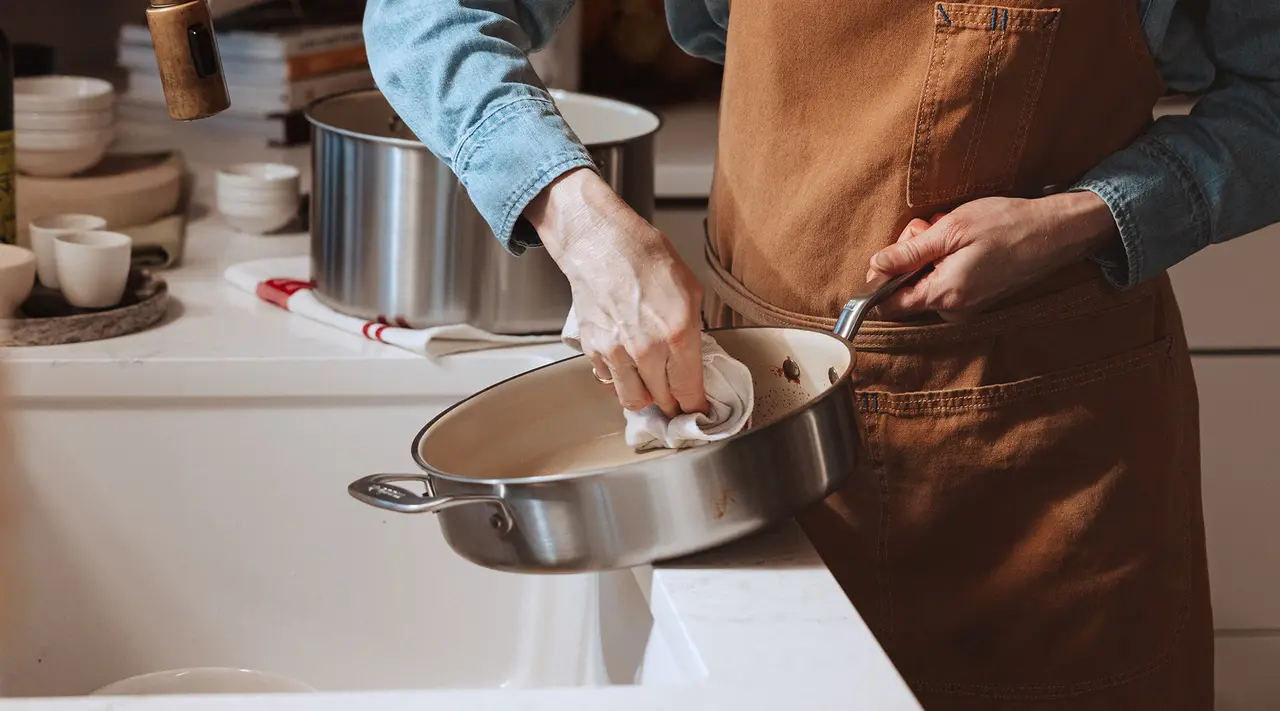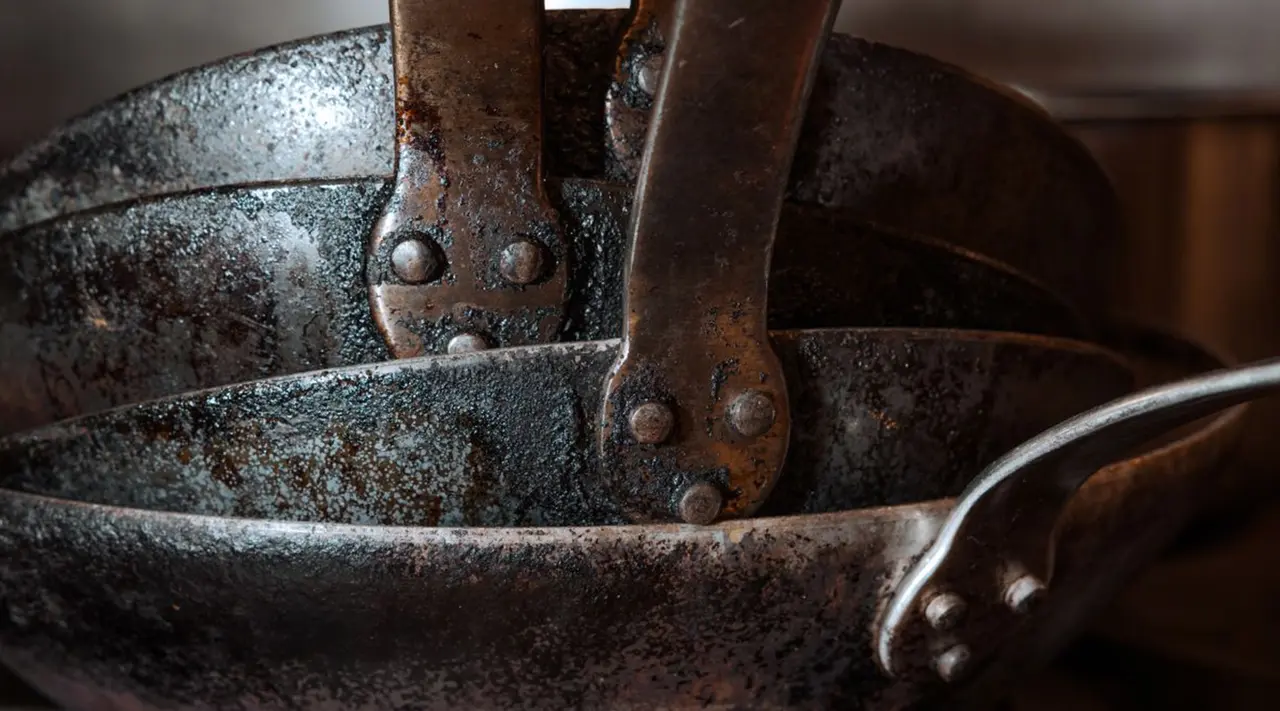If you’ve recently received a new ceramic skillet, you may be wondering which types of utensils to use and which to avoid. Our CeramiClad™ Non Stick Collection features a ceramic coating that renders the surface non stick, making for easy cooking with less fat and a quick cleanup. (The non toxic coating is made without harmful chemicals like PFAS, PFOA, PTFE, or heavy metals like lead and cadmium.)
To maintain your ceramic cookware and prevent damage, there are a few things to keep in mind, especially when it comes to what utensils to use or leave in the drawer. Below we’ll dive into the best utensils for ceramic cookware.
Why Does Using the Right Utensils Matter?

Preserving the Non Stick Surface: Similar to non stick and enamel-coated pans, you don’t want to use anything too abrasive or you risk scratching the coating and damaging the cookware.
Ensuring Durability: Fewer scratches and nicks in the coating mean the cookware’s non stick properties will last longer. Once the coating is damaged, it’s likely damaged for good. Using the correct types of utensils will prolong the life of your ceramic cookware.
Improving Cooking Performance: Barring extenuating circumstances, you wouldn’t try to flip a pancake with a spoon, right? Using the correct tool for the job will make your life easier and ensure your food cooks evenly without sticking.
Considerations When Choosing Utensils for Ceramic Cookware
Since ceramic cookware is a little more delicate than carbon steel or stainless steel, you’ll want to keep a few things in mind when choosing which utensils to use.
Material
Above all, avoid cooking with metal utensils, which usually have sharp edges. Instead, reach for utensils made with softer edges that won’t cause damage, including:
- Silicone: Heat-resistant (over 500F) and flexible, silicone is a great choice for cooking on ceramic cookware. It’s gentle on ceramic surfaces but can be sturdy enough to flip fish filets, fried eggs, pancakes, or slabs of tofu. Silicone utensils are also generally dishwasher safe.
- Wood: The classic choice, wood also works well with ceramic cookware. Wood is hard enough to break up chunks of meat but soft enough to avoid scratching a pan’s surface. Wood can handle high temperatures and it looks great, too.
- Nylon: Nylon is an affordable option which is also gentle on ceramic. Do note that it’s less heat-resistant (it can handle up to about 400F). If used at higher temperatures, nylon can melt, become brittle, and break.
Shape and Design of Utensils
In addition to choosing utensils that are comfortable to hold and operate, look for design features like rounded edges and smooth surfaces. These help protect the ceramic coating by reducing the chances for scratching.
Heat Resistance
As mentioned above, depending on the utensil’s material, it’s important to know how much heat it can handle. If a spatula melts or warps during cooking, it’s best to dispose of it and get a new one (preferably one that can take a little more heat!).
Our Top Picks: Best Utensils for Ceramic Cookware

Our favorite utensils to use for ceramic cookware are two long lasting options: wood and rubber.
Wooden Utensils
Wooden utensils are a durable, multipurpose choice for ceramic cookware. Non reactive by nature, wooden utensils typically feature rounded, smooth edges, ensuring no damage to pans. Our Wooden Spoon is also sturdy enough to use for mixing and stirring, and features a broad, concave bowl, increasing its versatility. Like all things wooden, you should wash wooden utensils by hand only.
Rubber Utensils
Rubber (aka silicone) utensils are an excellent, dishwasher safe choice for ceramic cookware. The rubber is soft enough to avoid scratching while sturdy enough to flip delicate foods. Our Rubber Spatula, with a silicone head and stainless steel handle, excels at flipping ingredients in a skillet thanks to its large, broad shape. A rubber Spoonula, part of our 5-Piece Kitchen Utensil Set, makes a great option for stirring sauces or scraping ingredients out of a skillet.
Additional Ceramic Cookware Care Tips

- Cleaning Tips: A big pro to using ceramic cookware is its ease of cleaning. Still, a few pointers are always useful:
- Always let your pan cool down to avoid thermal shock and warping.
- Use a gentle dish soap and sponge; avoid an abrasive scouring pad.
- Rinse and dry thoroughly after cleaning.
- Check out our guide on cleaning ceramic cookware for more tips and details.
- Proper Storage: We recommend this for most of our cookware, but for ceramic especially, it’s important to use a towel, soft trivet, or Pan Protector if you’re stacking your pans. Another great option is to hang your cookware from a rack.
- Maintenance Practices: It’s also a good idea to routinely check your cookware and utensils to make sure no scratches or other damage are starting to occur.
Ready to Shop?
Ceramic cookware is incredibly easy to use and clean, so make sure you’re keeping it in its best shape by reaching for the proper utensils. Our Wooden Spoon and Rubber Spatula pair perfectly with our new CeramiClad™ Non Stick Collection.


























